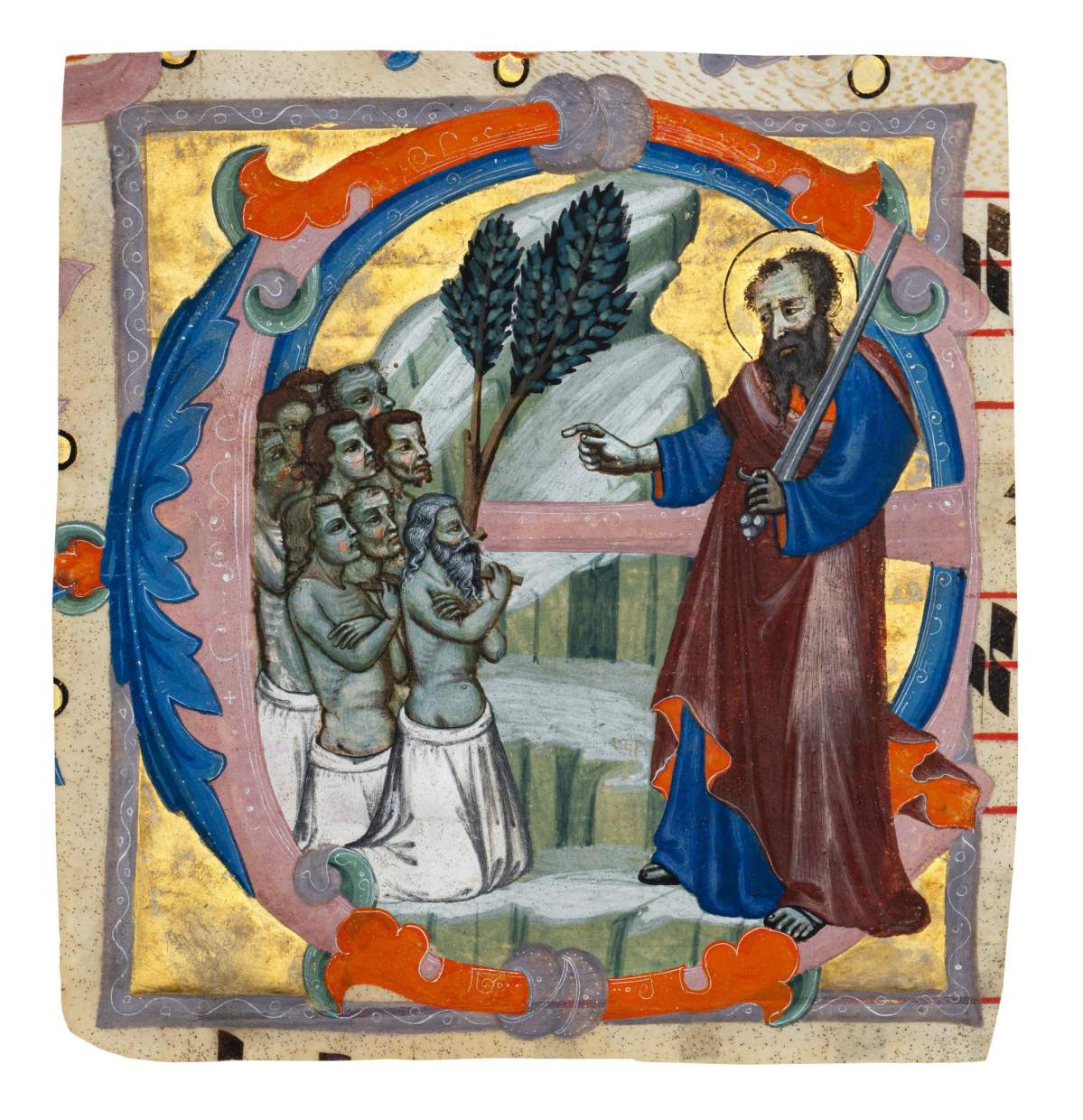

Saint Paul before the flaggelants, initial E, Master of San Giovanni Fuorcivitas (workshop), Tuscany, Florence, c. 1330-1340.
c. 157 x 161 mm. Tempera and burnished gold on vellum.
Provenance: Europe, private collection; New York, Alana collection.

This captivating scene shows Saint Paul in front of a half-naked group of flagellants. With his left hand, he is pointing at the group while in his right hand he holds a sword, the tool of his martyrdom. His face is marked by deep lines exuding grief in a very tangible manner. Saint Paul is dressed in a long blue tunic and a dark red cloak with bright red lining, echoing the body of the initial E which frames the scene. This leaf stems from an Antiphonary, most likely made for the Compagnia dei Bianchi, a flagellant community who might have placed themselves under Saint Paul’s patronage.
The body of the letter consists of four colours: Blue, dusky pink, orange and occasional grey, decorated with stylised leaves and knots, finely textured with white linear ornaments. The flagellants, addressed by Saint Paul, are kneeling on the ground, clad only in a long white loincloth and with their arms crossed in front of their chests. The emaciated bodies and harshly lined faces of the flagellants almost merge with the desolate landscape of the background. The rose-pink blush for lips and cheeks lends the group a feverish and thoroughly determined look.
The initial is most likely the work of the Master of San Giovanni Fuorcivitas, one of the great protagonists of Florentine book illumination in the second quarter of the 14th century. The expressive figures, their angular features and firm gaze, as well as the archaic-looking greenish flesh tones, correspond to the style of the illuminator in question. His work can be equalled to Pacino di Bonaguida, Maestro Daddesco, and the Master of the Domincan Effigies, and the Master of Santa Cecilia.
The initial is an enticing work due to the grief-stricken expression of Saint Paul and the emaciated bodies of the flagellants, who believed that their bodily suffering would sway God to clemency for the repentive humanity.
Read more about a complete Antiphonal made by the Master of Santa Cecilia here.



